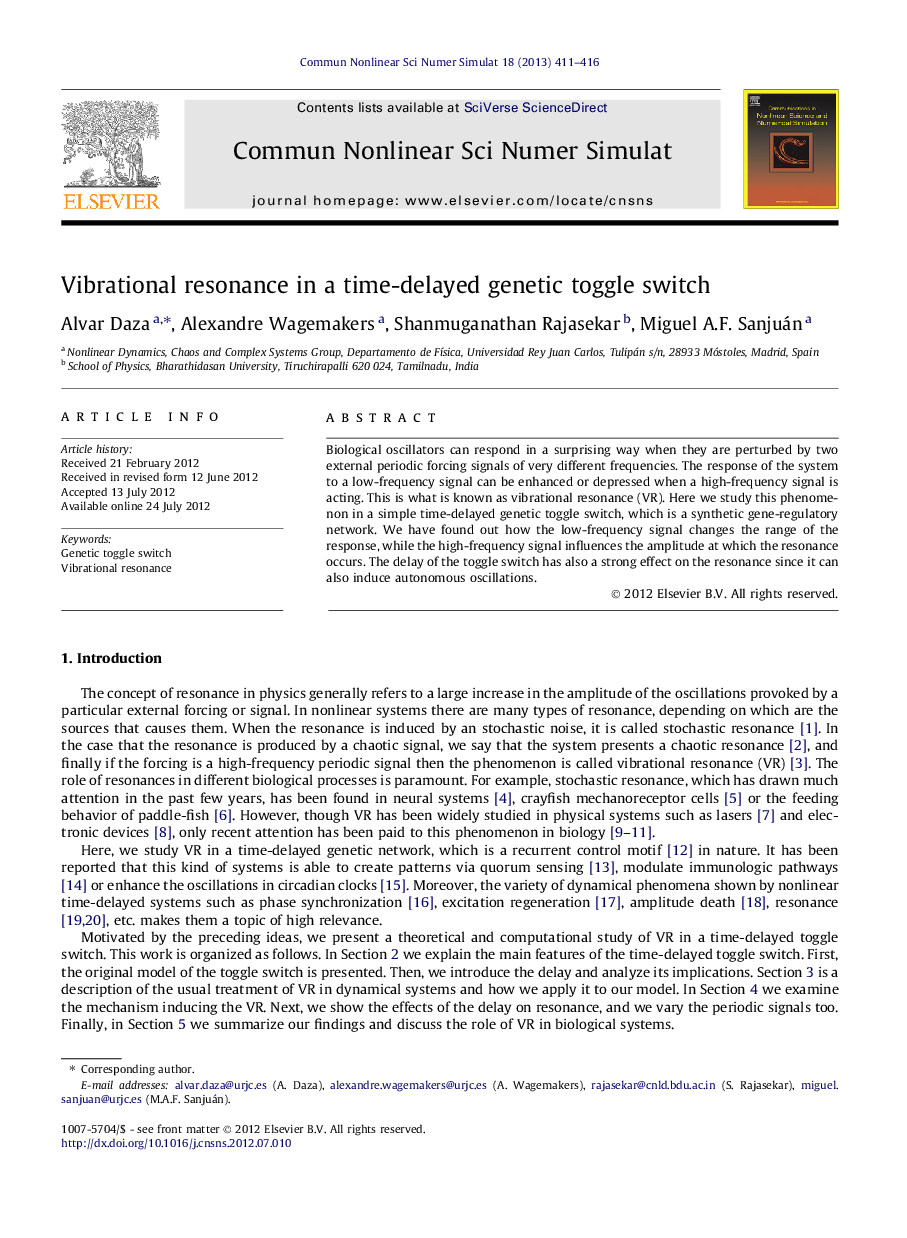| Article ID | Journal | Published Year | Pages | File Type |
|---|---|---|---|---|
| 755901 | Communications in Nonlinear Science and Numerical Simulation | 2013 | 6 Pages |
Biological oscillators can respond in a surprising way when they are perturbed by two external periodic forcing signals of very different frequencies. The response of the system to a low-frequency signal can be enhanced or depressed when a high-frequency signal is acting. This is what is known as vibrational resonance (VR). Here we study this phenomenon in a simple time-delayed genetic toggle switch, which is a synthetic gene-regulatory network. We have found out how the low-frequency signal changes the range of the response, while the high-frequency signal influences the amplitude at which the resonance occurs. The delay of the toggle switch has also a strong effect on the resonance since it can also induce autonomous oscillations.
► Vibrational resonance in a time-delayed genetic toggle switch is found. ► Variations of the low-frequency signal lead to changes in the width of the resonance peak. ► Variations of the high-frequency signal shift the resonance curves. ► The effect of the delay on the resonance is investigated.
